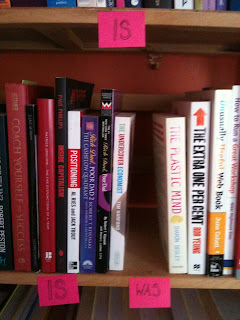The fading light prototype built earlier, if brought into a two-location architecture could show IS and WAS.
For example take a public place like a park bench applied to the fading light prototype. <Photo taken in Finsbury Park>.
Applied to a single-location scenario: 'I WAS here'
There is also the possibility to design the bench a different way, and rather than having anonymous panels, to have something like lit-up panels saying 'i was here' and making it more self-explanatory. Otherwise there would need to be an instruction panel on the side or something similar. This would be an example of a 'WAS' scenario.
Applied to a two-location 'IS' scenario:
1. Two park benches at different locations in the park

Why? Essentially just to bring people together.
This idea of 'IS' and 'WAS' is a step forward from the ideation work a few months ago involving a bookshelf: It was where gaps in the bookshelf signified things that WERE there, versus book that ARE there. Pink post-it notes were labelled and stuck onto the shelves.
What if the people on the benches could share memories or stories?
False Memory
What if there was nothing distinguishing between real and false, and that any story could be shared? What if the lights stayed on for longer and shorter periods of time so users walking by didn't really have any idea of how long ago a person was REALLY there? What if the only way to tell if someone was really there was to be there when their light initially turned on!
What if the bench captured images of everyone who sat down, and shared them, but what if they didn't match up correctly all the time...





No comments:
Post a Comment